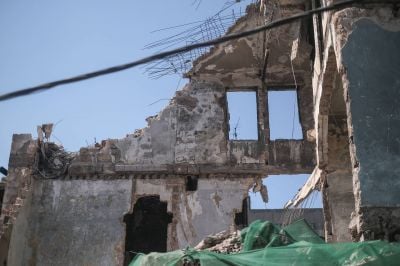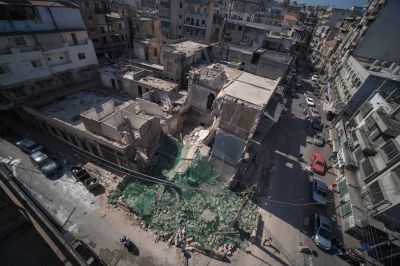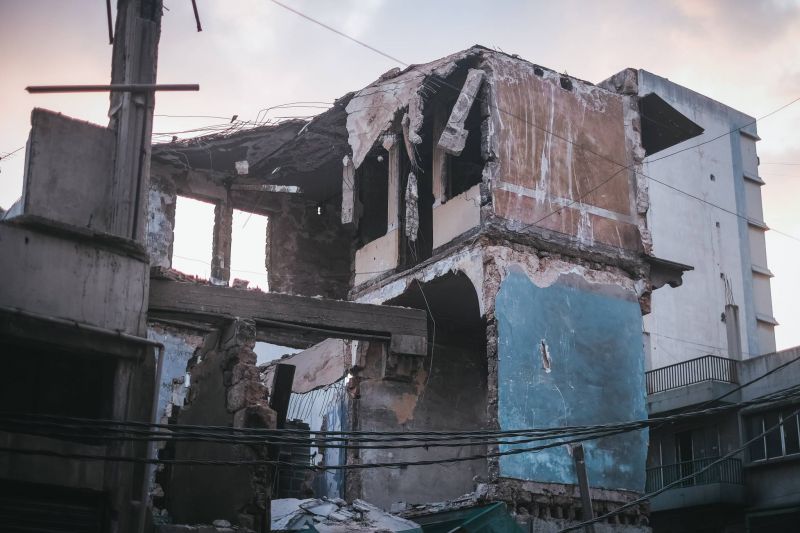
Collapsed building in Tripoli, Sept. 21, 2023. (Credit: João Sousa/L'Orient Today)
BEIRUT — Some 700 buildings in Tripoli are at risk of collapse due to a slew of factors, while the city hosts the highest number of buildings affected by Lebanon's Civil War that were never fully repaired, a member of Tripoli's City Council told L'Orient Today.
In the last year, Tripoli has experienced a number of incidents where buildings, ceilings and walls have collapsed on top of residents. The issue came to a head in February following the devastating earthquake that hit southern Turkey and caused shockwaves in Lebanon.
At the time, residents in Tripoli told L'Orient Today about their concerns for the structural integrity of their homes. They later expressed fears that cracks that appeared after Turkey's earthquake had not been properly addressed by municipal authorities.
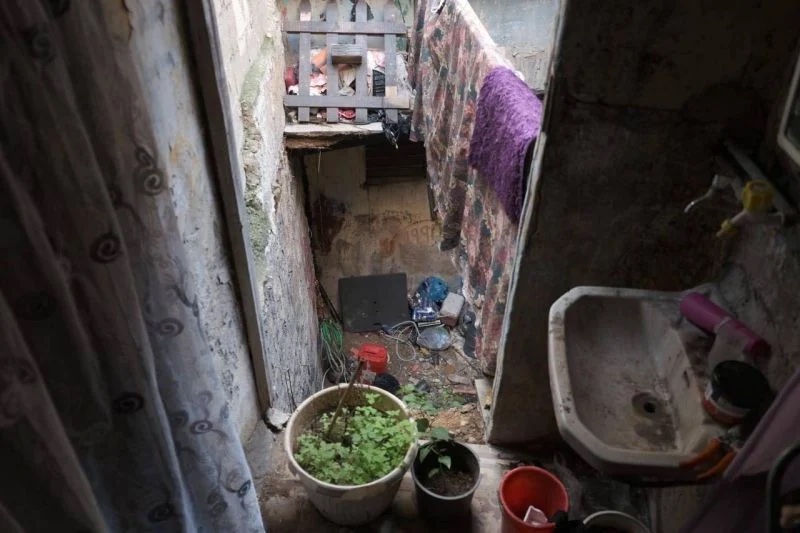 Inside an old house in Tripoli shortly after the Feb. 6 earthquake that shook the city awake. (Credit: João Sousa/L'Orient Today)
Inside an old house in Tripoli shortly after the Feb. 6 earthquake that shook the city awake. (Credit: João Sousa/L'Orient Today)
So what are the reasons behind this ongoing issue, and what is being done about it? Let's start with a reminder of how the problem has evolved over the last few years:
Feb. 8, 2023: Lebanon's caretaker Interior Minister, Bassam Mawlawi, issues a call for municipalities to conduct an assessment of buildings and areas affected by the pre-dawn 7.8-magnitude earthquake that hit Turkey and shook Lebanon.
Feb. 6 2023: Omar Barakat, who lives in an old house in Tripoli, suffers a fractured wrist while he is checking the water tank on the roof, when part of it collapses. He's unsure if it fell due to strong storms that month or from the earthquake.
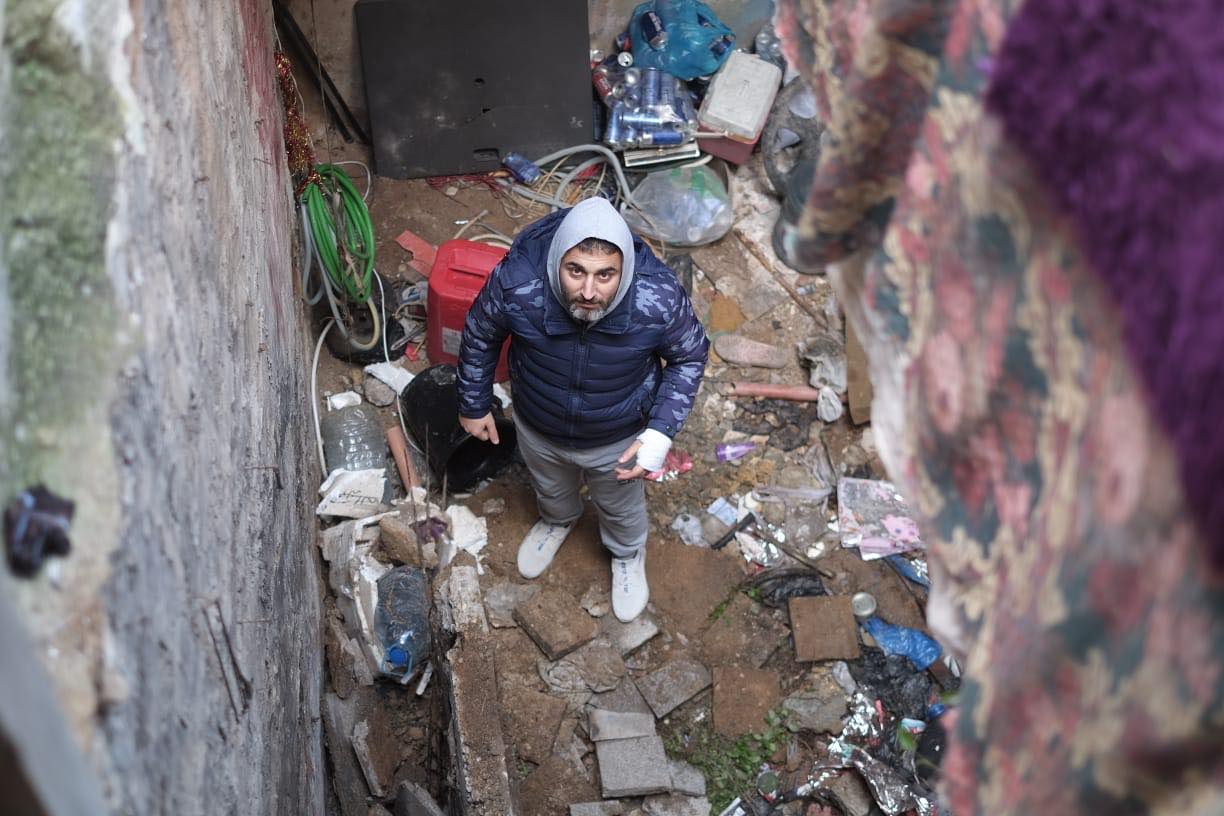 Omar Barakat, who lives in an old house in the Mina sector of Tripoli, suffered a fractured wrist in February after his balcony collapsed. (Credit: João Sousa/L'Orient Today)
Omar Barakat, who lives in an old house in the Mina sector of Tripoli, suffered a fractured wrist in February after his balcony collapsed. (Credit: João Sousa/L'Orient Today)
During February, Turkey's earthquake as well as several less intense seismic events and aftershocks that occurred in Lebanon resulted in damage and cracks to many buildings in Tripoli, residents say.
Nov. 8, 2022: A man dies when a wall caves in on him in the al-Maloulah neighborhood of Tripoli.
Nov. 2, 2022: A student — 16-year-old Maguy Mahmoud — is killed when the ceiling of her Jabal Mohsen school building, which dates back to the Ottoman era and is one of many dilapidated structures in the city, collapses. During the same month the Parliament's Public Works, Transportation, Energy and Water Committee formed a sub-committee tasked with tracking buildings at risk of collapse.
June 26, 2022: A four-story building collapses in Tripoli’s Bab al-Tabbaneh neighborhood, claiming the life of four-year-old Joumana Diko. The incident injures several others, including the victim’s mother Lina Kammoun, who is pulled from the rubble.
Oct. 2021: Two sisters lose their lives when a residential balcony collapses in the al-Qibbeh area in Tripoli.
Dec. 2019: Abdel Rahman Kakhieh, 21, and his sister Rama, 18, suffer a similar fate in the al-Fawal building's collapse in Mina, a district of the city that has a separate municipality. Angered protestors make their way to the Mina municipality building and the residence of the Mina mayor Abdel-Kader Alameddine, whom they accused of negligence.
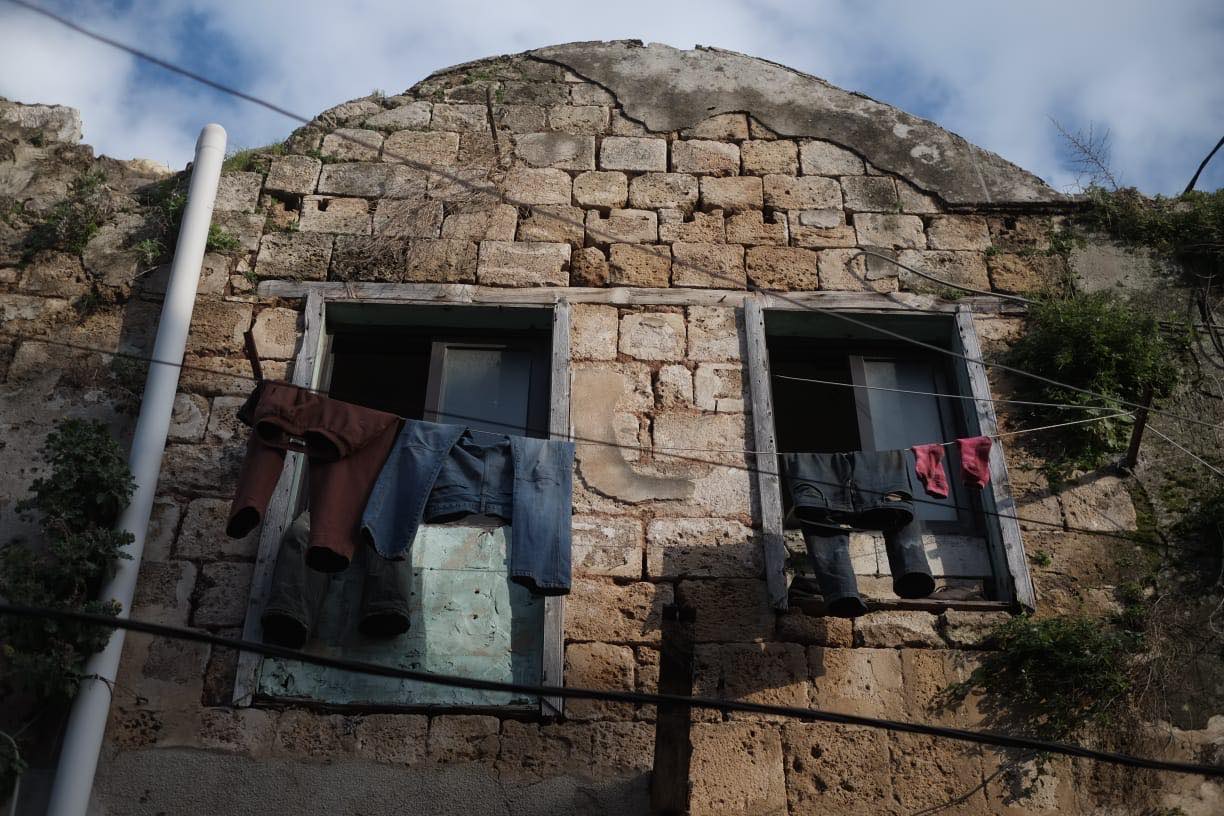 An old building in Tripoli, North Lebanon. (Credit: João Sousa/L'Orient Today)
An old building in Tripoli, North Lebanon. (Credit: João Sousa/L'Orient Today)
What has been done to address the issue?
On Feb. 8 this year, Lebanon's caretaker Interior Minister, Bassam Mawlawi, issued an urgent call for municipalities to conduct an assessment of buildings and areas affected by the 7.8-magnitude earthquake that shook parts of Turkey, Syria, Lebanon, Jordan and Cyprus.
He asked them to identify buildings with structural issues, leaks and landslides on public roads. He also announced his intention to involve the Order of Engineers of Beirut and Tripoli to oversee repairs or reinforcement of damaged buildings and roads.
Additionally, Mawlawi requested that municipalities provide a comprehensive report to the Higher Relief Committee detailing unrepaired damaged structures and uncleared landslides, along with an estimate of the maintenance costs.
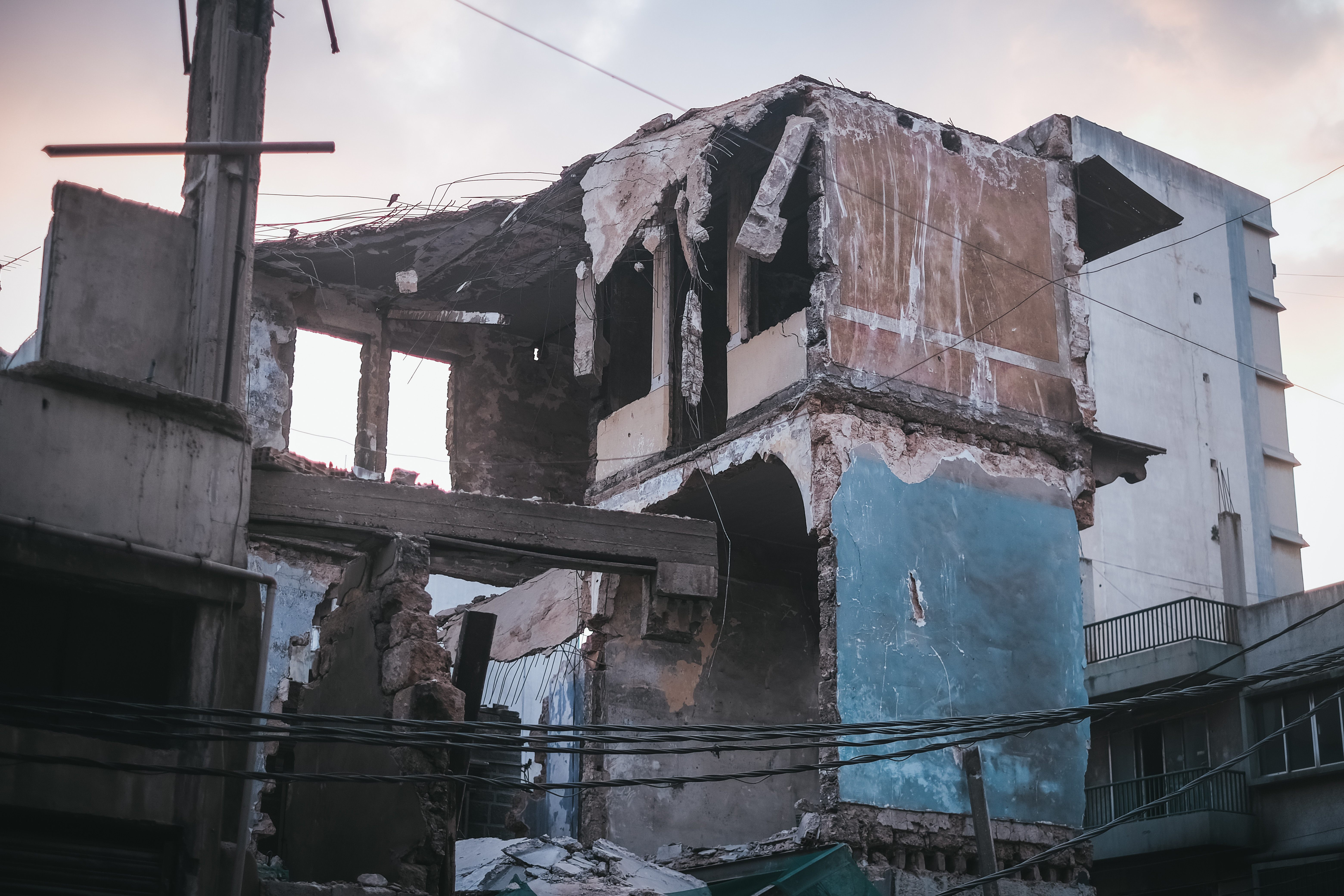 A collapsed building in Tripoli, Sept. 21, 2023. (Credit: João Sousa/L'Orient Today)
A collapsed building in Tripoli, Sept. 21, 2023. (Credit: João Sousa/L'Orient Today)
What is the scale of the potential risk?
"More than 16,260 buildings are at risk of collapse across the country," President of the Lebanese Association of Properties, Andira al-Zouhairi told L'Orient Today, indicating that these "approximate and nonfinal" numbers were recorded before the Aug. 4 2020 Beirut port explosion.
Zouhairi added that 4,000 buildings are at risk of collapse across the entirety Tripoli and North Lebanon governate, while 10,460 are at risk in Beirut.
Due to the absence of a formal consensus, these figures should be regarded as approximations. Nonetheless, there is undeniable evidence that a significant number of buildings in the country have structural failures, she says.
Khaled Tadmori, a member of Tripoli's City Council and Chairman of the Municipality's Heritage and Historical Monuments sub-committee, told L'Orient Today that the municipality found "around 700 buildings" that are at risk of collapse in the city of Tripoli alone. Tadmori noted that the survey's numbers are approximate.
Tripoli's Municipality has issued evacuation orders to certain residents in the area, but due to the severe shortage of affordable housing alternatives, compliance is complicated. Some residents of at-risk buildings were vacated, placed in shelters or given temporary rent cash, Tadmori said.
Referring to a "non-finalized" survey by Tripoli's municipality of buildings at risk of collapse, Zouhairi added that they "were categorized unfit to live in, tagged as such, and vacated" if residents were still living in them.
She added that the at-risk buildings, including schools and residential buildings, lie in populated areas and a pose danger to the surrounding areas, as they are usually adjacent to one another in Tripoli.
Recovery after the earthquake
Zouhairi claimed that some buildings in Tripoli have been rehabilitated, albeit "slowly," following the earthquake, "but not the way it should have been [done] — they just conducted patchwork."
"This is worse because this makes it harder for architects to distinguish between risk-free and risk buildings — the patchwork diminished the defects that they could have detected to determine whether a building is at risk to collapse," she added.
"They can't just plaster up a crack in a wall and move on — the foundation, cement quality, the age and location of the structure must be examined and reported on, Zouhairi added.
According to Zouheiry, the economic downturn since 2019 has led to an increased likelihood of buildings collapsing in poverty-stricken Tripoli because of the elevated expenses associated with construction materials, combined with inadequate incomes that cannot cover the essential renovation, reinforcement and repair efforts.
Other risk factors: Impact of climate change on buildings in Lebanon
Zouhairi raised some other factors that can potentially impact buildings' structures.
She pointed out that climate change might affect the many buildings across Lebanon that are above the 80-years-old mark. Crucial elements that impact the structure of a building, such as temperature, rainfall, wind and sunlight, have shifted today and Lebanon's ancient buildings might be unfit to withhold those changes.
Zouhairi explained that this phenomenon is true for all old buildings across the country, especially in Tripoli, as the Mediterranean city hosts a sizable number of categorized historic buildings, in addition to the city's high poverty rate and neglect by those who own at-risk buildings.
Furthermore, Zouhairi feared the impact of torrential rain that is expected as winter closes in, "especially since gutters and sewer pipes in Lebanon's cities are neglected."
Meanwhile, many residents in Tripoli lack awareness on how to report at-risk buildings or to steer clear when structures collapse, Zouhairi said. "Oftentimes, people gather next to a building that is about to collapse."
